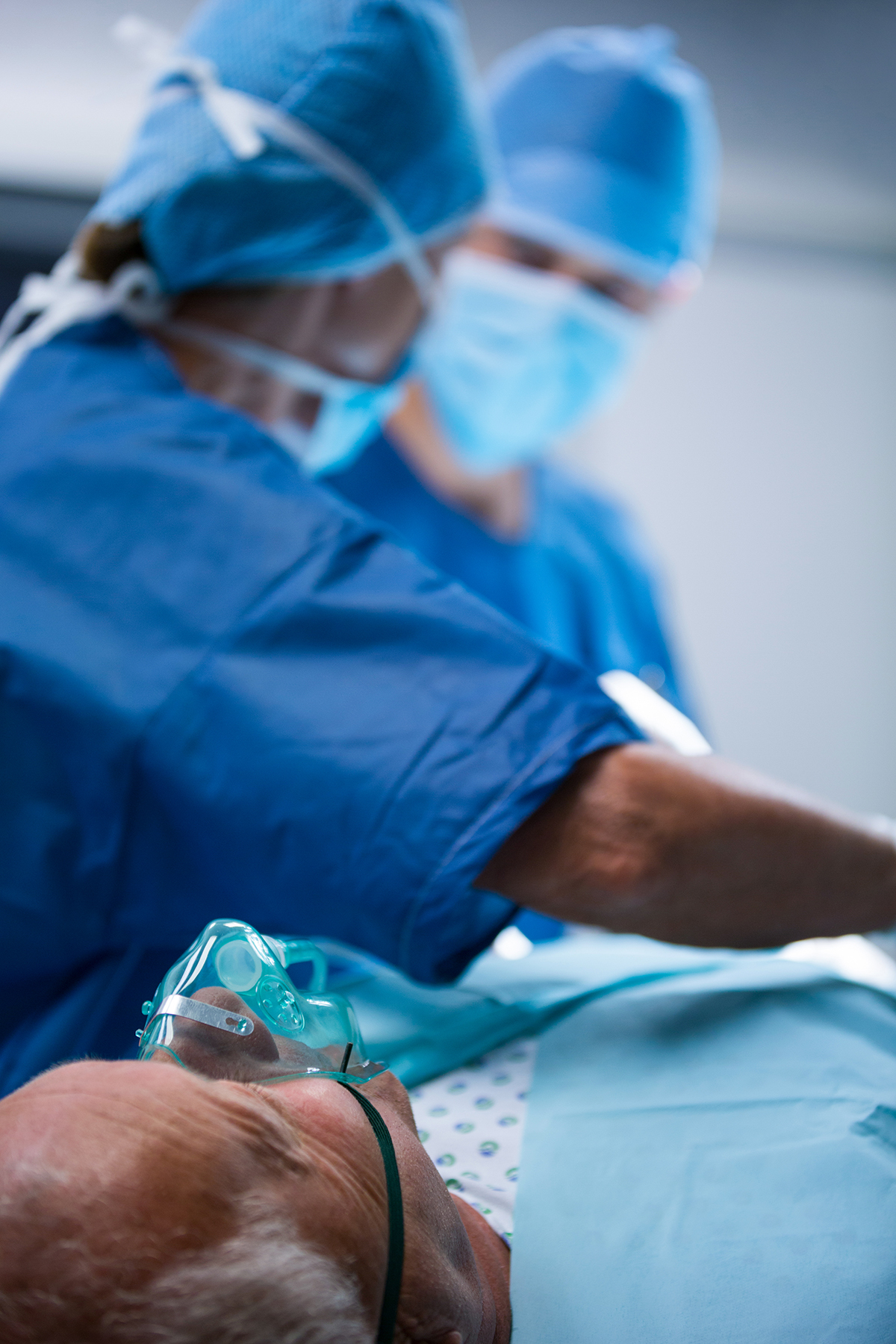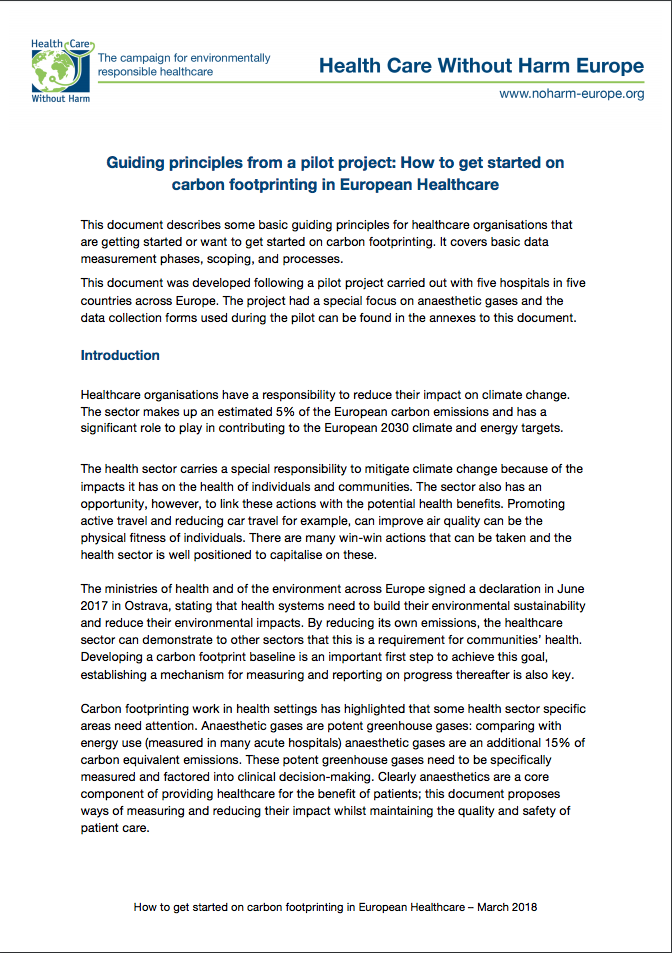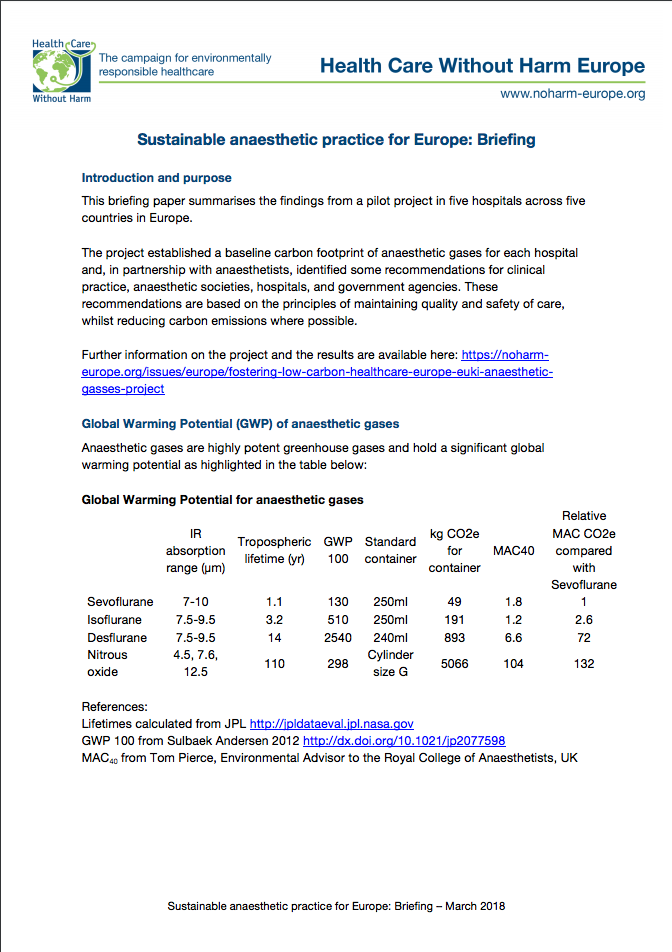Fostering Low Carbon Healthcare in Europe - EUKI Anaesthetic Gases Project
 With financial support from The European Climate Initiative (EUKI), HCWH Europe launched a pilot project to support six European hospitals in measuring their carbon footprint, including greenhouse gas (GHG) emissions from the use of anaesthetic gases. During the project, (which ran until March 2018), HCWH Europe worked with hospitals from France, Germany, Poland, Portugal, Spain, and Sweden to measure emissions and share data.
With financial support from The European Climate Initiative (EUKI), HCWH Europe launched a pilot project to support six European hospitals in measuring their carbon footprint, including greenhouse gas (GHG) emissions from the use of anaesthetic gases. During the project, (which ran until March 2018), HCWH Europe worked with hospitals from France, Germany, Poland, Portugal, Spain, and Sweden to measure emissions and share data.
In order for the EU to meet its 2030 climate and energy package targets, countries must set national goals for different economic sectors. While healthcare makes up an estimated 5% of European GHG emissions, very few health systems have measured their carbon footprint or set emission reduction targets.
 To be able to set national and European targets for the healthcare sector, the sector must first track and measure its emissions. Very little data about carbon emissions from the European healthcare sector (especially those from the use of anaesthetic gases) currently exists. This pilot project seeks to enable and support European hospitals to track emissions from their activities. In doing so, they will be able to quantify their environmental impact and set emission reduction targets. The project places specific emphasis on anaesthetic gases, as a relatively unexplored source of GHG emissions.
To be able to set national and European targets for the healthcare sector, the sector must first track and measure its emissions. Very little data about carbon emissions from the European healthcare sector (especially those from the use of anaesthetic gases) currently exists. This pilot project seeks to enable and support European hospitals to track emissions from their activities. In doing so, they will be able to quantify their environmental impact and set emission reduction targets. The project places specific emphasis on anaesthetic gases, as a relatively unexplored source of GHG emissions.
Why anaesthetic gases?
- Although emissions from the use of anaesthetic gases are small relative to other sources in healthcare, they are extremely potent greenhouse gases and persist in the atmosphere for a long time
- Uncontrolled venting of anaesthetic gases is also a health risk, particularly for workers
- Occupational exposure to anaesthetic agents is associated with impaired fertility and spontaneous abortion in women
Two experts, who are experienced in technical data and interpretation of data, provided training and expertise to the participating hospitals. HCWH Europe have published a summary of the project's closing meeting, which includes the featured presentations from participating hospitals and the project summary, including the project overview ![]() Fostering Low Carbon in Healthcare.
Fostering Low Carbon in Healthcare.
View the full summary including presentations here
As part of the project, a software consultant also developed a tool for measuring and calculating the carbon equivalent of anaesthetic gases specifically. While tools to quantify GHG emissions from energy use are available across multiple sectors, the use of anaesthetic gases is unique to the healthcare sector and tools to calculate emissions from their use are not widely available. The development of this tool will facilitate the healthcare sector's ability to focus on these GHG emissions and track hospital’s progress in reducing them.
At the end of this project HCWH Europe produced two documents: Guiding principles from a pilot project: How to get started on carbon footprinting in European Healthcare and Sustainable anaesthetic practice for Europe: Briefing. Based on data from the measurement tool, a section specifically on anaesthetic gases will be included. These guidelines and recommendations will be the basis for scaling up the project, and for laying the foundation for the setting up of carbon reduction targets in healthcare at a national level in Europe.
[EN] Sustainable anaesthetic practice for Europe: Briefing
[ES] Práctica sostenible anestésica para Europa: Resumen
[FR] Pour la pratique anesthésique durable en Europe
[DE] Umweltverträgliche Anästhesiepraxis für Europa: Briefing
Photo: Patient under anaesthesia (stock photo)


